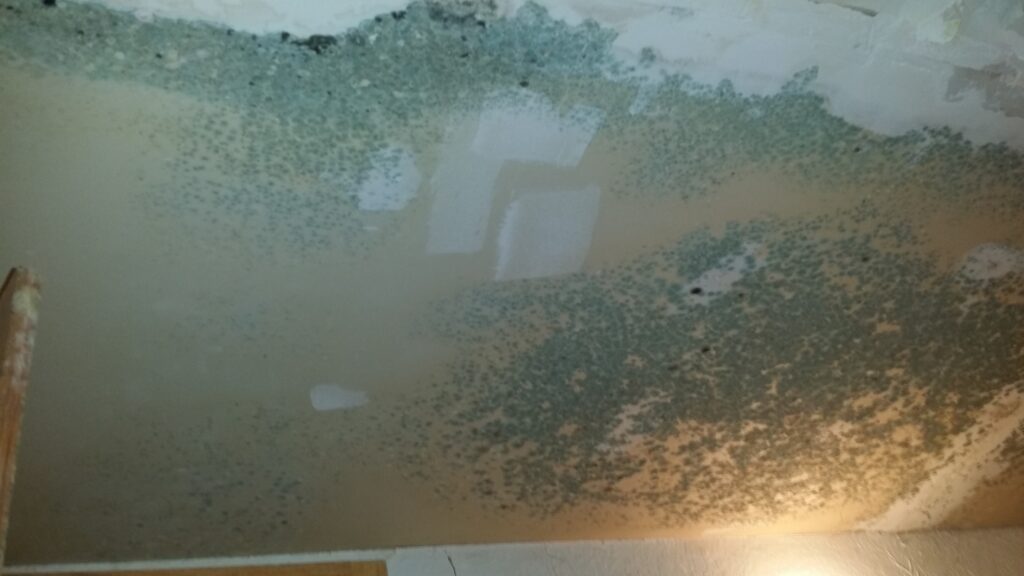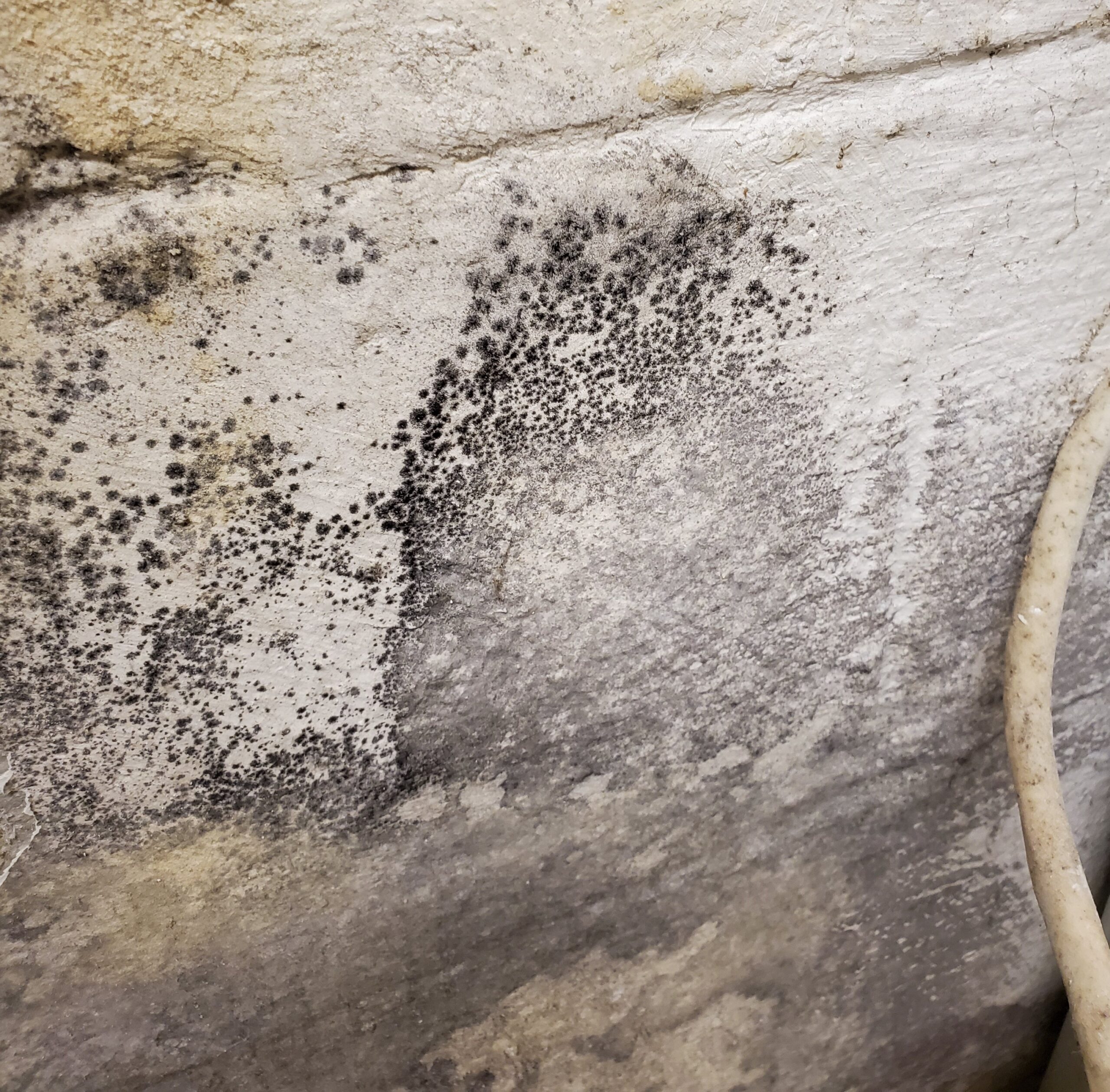Though mold is unwanted indoors, they have a very important role in the environment. Mold is part of the Kingdom Fungi. There is estimated to be more than 1.5 million species of mold. Mold breaks down organic material, such as dead leaves by consuming the material.
The indoor mycoflora (fungal species mix) comprises species that originate from 4 groups from the kingdom Eumycota. These are Ascomycetes, Basidiomycetes, and Zygomycetes. Only 50-60 species are typical in the indoor environment.
Molds can multiply by producing microscopic spores about 2 – 100 microns [μm] in diameter. A micron is about .000039 of an inch, which is really small! Since spores are so small, they easily float through the air and can be carried for great distances with little air movement. The number of mold spores suspended in the air fluctuates seasonally, daily, and even hourly.
Mold spores are ubiquitous in that they are found everywhere. Because of this, they can never be completely eliminated from indoor environments. Mold spores will be found floating through the air and in settled dust in even the cleanest of environments.
Mold spores will not grow if moisture is not present. However, if mold spores land on a damp spot, mold can begin to grow. As molds grow, they consume the substrate they are on, eventually damage buildings and furnishings. If left long enough, mold can cause structural damage to buildings. Mold can also cause cosmetic damage, such as stains. Common sites for indoor mold growth include anywhere moisture is present. This often includes bathrooms, kitchens, basements, laundry areas, areas around windows, water fountains, and sinks.
A period likely to promote mold growth is defined as any 24-hour period during which there was 100% relative humidity or humidity greater than 70% following a period of 100% humidity at the surface being tested. This means that continuous wetting of materials for periods lasting at least 24 hours may result in prolific mold growth. The doubling time of some indoor fungi can be as rapid as 1 to 3 hours at optimal temperature, growth and germination of a spore may form a visible colony on a substrate within 24-48 hours.
A local, long term average air relative humidity of 80% indicates material water activities of .8 and therefore likely growth of xerophilic species of mold. A long-term average air relative humidity of 55% would indicate little likelihood of mold growth.
Moisture is the most important and controllable factor influencing mold growth indoors.
Besides moisture, mold needs nutrients. Mold can grow on virtually any substance. Most buildings are full of organic materials that mold can use as food, including paper, cloth, wood, plant material, dust, and even soil. Often, more than one type of mold can be found growing in the same area, although conditions such as moisture, light, and temperature may favor one species of mold over another.
Health Effects
In addition to causing structural and cosmetic damage to buildings, mold can impact human health. Due to the number of types of molds, lack of research, and other variabilities, the scientific evidence of the impact of mold on human health is limited. Though the scientific evidence is limited, the anecdotal evidence is not. There is known correlations between damp buildings and health effects, which include:
- Office workers in a building that had been damaged by water leaks over a period of years were more than twice as likely to suffer from wheezing or asthma and over three times more likely to suffer from adult onset asthma compared to the general population.
- There is a broad spectrum of health effects that vary in symptoms, pathologic mechanism and severity.
- Exposed populations vary in susceptibility.
- Symptoms common to a broad range of building related and nonbuilding related health conditions make determine a public health significance difficult.
- There is a high prevalence of non-specific symptoms. Many people make building health related complaints, but many symptoms are indistinguishable from non-building related infections and allergies.
- Environmental agents (source and ambient reference) may differ significantly and may change with season and weather.
- Environmental agents that are not related to dampness or microbial growth can produce similar symptoms. Fungal allergens and animal dander passively transferred into a building can result in the same symptoms among sensitized individuals.
- Exposure assessment methodologies for agents of concern in building environments are very limited. Exposure potential is frequently assessed by collecting short term air samples. The agents of concern such as fungal allergen load may not be assessed directly.
- Dose response relationships for many agents are poorly defined and there are no generally accepted exposure criteria for assessing health risk. Few reference population values reflect exposed and unexposed populations and symptomatic and non-symptomatic populations.
- There are no “gold standard” medical tests for determine the presence of many building related health conditions. Tests for assessing sensitivity to a specific fungal agent may not be possible because there is no appropriate reference antigen or because there is significant cross reactivity with other common environmental fungal agents. In contrast, many occupational diseases have clear case definitions and available medical tests to determine the presence of an underlying condition.
Allergic reactions
Inhaling or touching mold or mold spores may cause allergic reactions for some people. If an individual is not allergic or sensitive to mold, repeated exposure could cause that individual to become allergic or sensitive.
Symptoms of an allergic reaction may occur immediately or slowly over time. Symptoms include hay fever-like symptoms such as headache, sneezing, runny nose, red eyes, or skin rash (dermatitis). Molds can cause asthma attacks in people with asthma who are allergic to mold. Generally, mold can irritate the eyes, skin, nose, throat, and lungs.
Severe health effects
Breathing in mold may also cause hypersensitivity pneumonitis, an uncommon disease that resembles bacterial pneumonia. In addition, mold exposure may result in opportunistic infections in persons whose immune systems are weakened or suppressed.
It is important to note these symptoms could be caused by other exposures or conditions unrelated to mold growth. Therefore, it is important to discuss with a medical provider any individual circumstance.
Mycotoxins
As molds grow, some species can produce potentially toxic byproducts called mycotoxins. Some of these molds are commonly found in moisture-damaged buildings. More than 200 mycotoxins from common molds have been identified, and it is suspected that many more remain to be identified. The amount and types of mycotoxins produced by a particular mold depends on many environmental and genetic factors. While some mycotoxins are known to affect humans, little health information is available for many mycotoxins and very little information on inhalation of mycotoxins. Research on mycotoxins is ongoing. Exposure to mycotoxins can occur from inhalation, ingestion, and skin contact.
Determining if there is a mold problem.
With intentful observation, mold is often found with the eyes and nose. Musty smells and visible growth are the most common ways of finding mold. Molds grow in all shapes, sizes, colors and figurations, which can make a determination if something is actually mold more difficult. Given that different molds often grow together, appearances can vary widely. Mold can be easily mistaken with dirt, efflorescence, soot, ghosting, and other substances. A qualified mold professional can’t always determine if the substance is mold just by looking at it. In many cases, people are worried about hidden mold. A qualified professional can conduct an investigation and determine if conditions are favorable, if there is a need for mold testing, the testing strategy and provide recommendations for removal.




